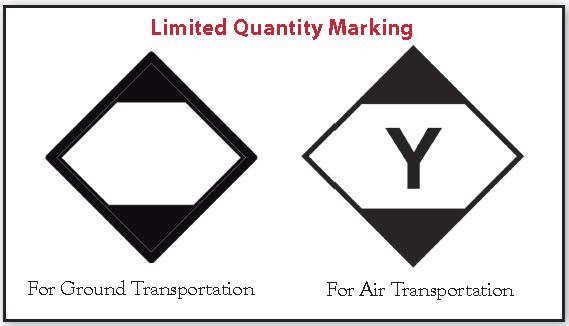Written on: October 1, 2019 by Nicholas Georges
Harmonizing U.S. regulations with the international community expands market access, decreases cost, increases efficiency and enhances safety. However, reaching alignment often requires a lot of time and effort on the part of regulators and industry. Such is the case with creating a single global system for the packaging and transportation of hazardous materials.
Many common household and commercial products, including aerosols, are classified as hazardous materials under the U.S. Dept. of Transportation’s (DOT) Hazardous Materials Regulations (HMR), the UN Model Regulations (UNMR) and the International Maritime Dangerous Goods (IMDG) Code.

In small quantities, with the correct packaging and labeling, shipments of these types of products present a limited hazard during transportation. To recognize this, there is a Limited Quantity exception with corresponding packaging label marks, as well as the ORM-D (Other Regulated Materials for Domestic Transport Only) mark.

When used correctly, the Limited Quantity provision and mark allows the shipment to avoid extra paperwork and ship safely and efficiently. The ORM-D does the same, however it is not internationally recognized, and the DOT’s Pipeline & Hazardous Materials Safety Administration (PHMSA) will not accept its use after Dec. 31, 2020.
The Limited Quantity provisions in the UNMR and the IMDG Code were already closely aligned with those in the HMR, so while it has taken almost a decade, phasing out the ORM-D classification is a major step toward creating a single global system for the packaging and transportation of hazardous materials.
The original 2011 PHMSA rulemaking called for the transition from ORM-D to the Limited Quantity markings for ground transportation and air transportation to be complete on Dec. 31, 2013. However, while industry agreed with the goals of the rule, concerns were raised that the transition was not long enough to deplete existing stocks in the supply chain. PHMSA was petitioned to reconsider, and the result was the extension of the ORM-D transition duration to Dec. 31, 2020, after which ORM-D will no longer be authorized.
For those of you that have not yet started transitioning away from ORM-D, I urge you to start now. Materials marked as ORM-D will have to conform to the requirements for Limited Quantity shipments or be shipped as fully regulated materials. It would be undesirable for your product to be stopped in the channels of distribution in January 2021 because it was old inventory. The Household & Commercial Products Association (HCPA) has a number of resources to assist in your compliance efforts.
I would encourage you to attend our next in-person meeting at the HCPA’s Annual Meeting, XPAND2019, in Fort Lauderdale, FL on Dec. 8–11, where HCPA’s Aerosol Products Division will be engaging in topics that are aimed to minimize regulatory impacts while expanding opportunities for growth in the aerosol industry. We’ll be discussing the latest on our petition to PHMSA to harmonize the definition of an aerosol and other efforts to align ourselves with the international community. Other meeting topics have included aerosol waste disposal and recycling, particle size distribution, inhalation toxicity, volatile organic compound (VOC) and hydrofluorocarbon (HFC) regulatory actions, Safer Choice, plastic and other packaging types, new technology and transportation.
Please do not hesitate to contact me at ngeorges@thehcpa.org if you have any shipping questions about the phase-out of ORM-D, utilizing Limited Quantity or XPAND2019. SPRAY
149 CFR § 172.315
2Docket No. PHMSA-2017-0131
3Hodnebrog, Ø et al. Lifetimes, direct and indirect radiative forcing, and global warming potentials of ethane (C2H6), propane (C3H8), and butane (C4H10). Atmos. Sci. Lett. 2018;19;e804
4IPCC, 2014: Fourth Assessment Report